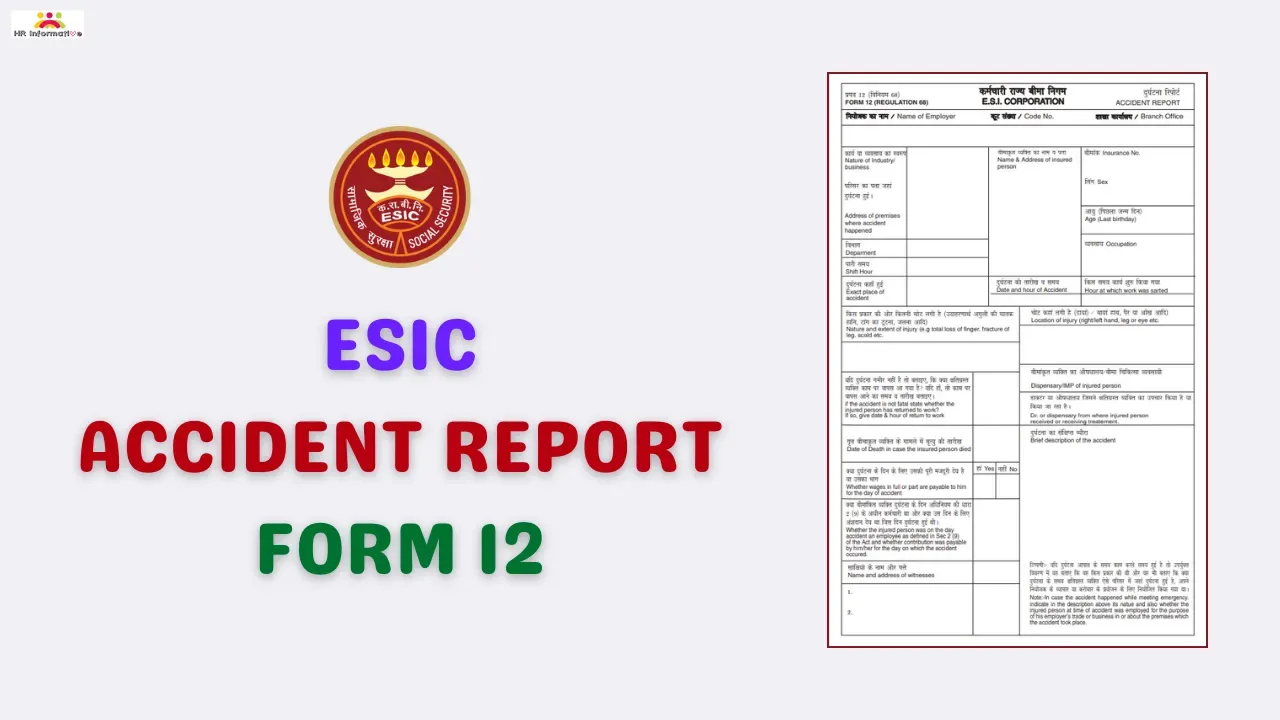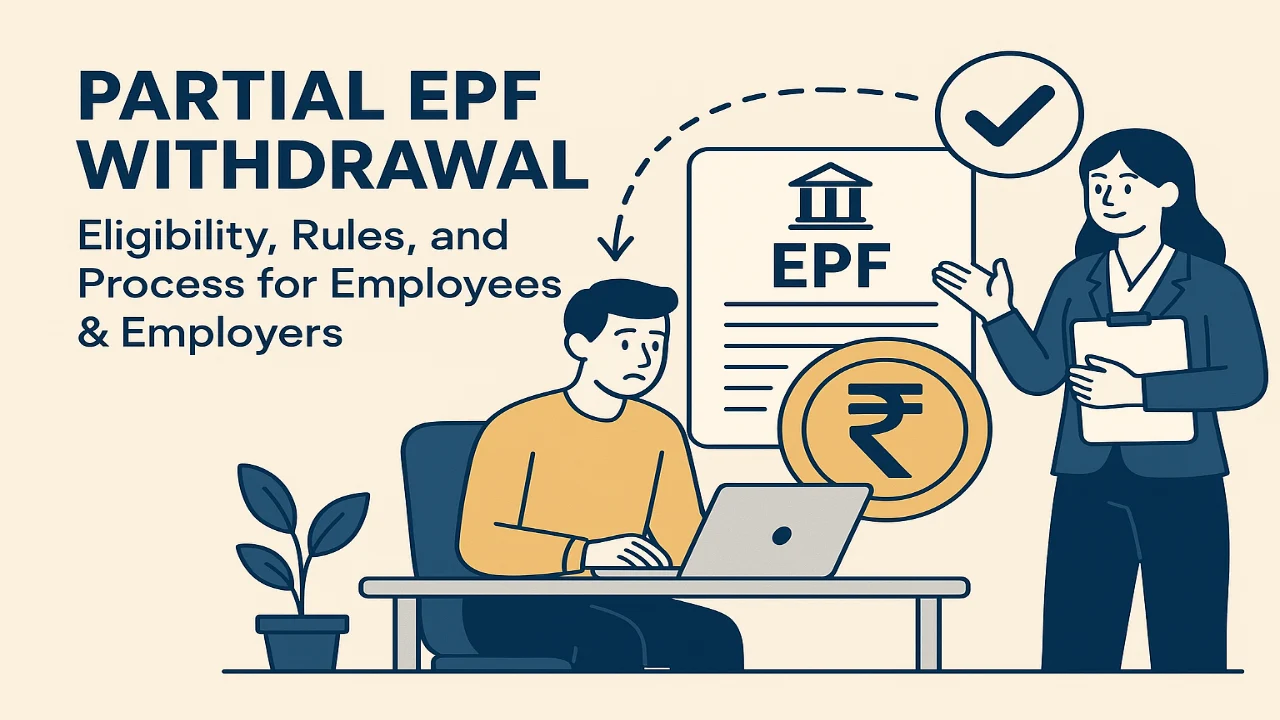Workplace accidents can be stressful, and in some cases, even life-altering. The Employees’ State Insurance Corporation (ESIC) is here to support workers by providing medical care and financial benefits when accidents occur. One of the most important tools in ensuring you receive these benefits is the Accident Report Form 12. Whether you’re an employer responsible for filing the report or an employee who wants to understand your rights, this guide is here to help.
What Is Accident Report Form 12 and Why Is It Important?
Accident Report Form 12 is a standardized document used to officially record any workplace accident. It collects all the crucial details about an incident, including:
- Employee Details: Name, age, ESIC number, and job role.
- Accident Information: When and where the accident happened, along with a detailed description.
- Injury Details: Type, severity, and parts of the body affected.
- Witness Accounts: Contact information and statements from anyone who saw the accident.
- Medical Care: Details about the immediate first aid provided and any further treatment or hospitalization.
- Employer Information: The company’s details and the person responsible for reporting the incident.
Filing this form accurately is essential because it triggers the process for timely medical assistance and compensation. It’s not just about paperwork—it’s about ensuring that if something goes wrong, help is on its way.
When and Who Should File the Form?
Who Is Responsible?
- Employers: It is the employer’s responsibility to fill out and submit the form. This must be done within 24 hours of the accident.
- Employees: While the employer takes the lead, it’s beneficial for employees to be aware of the process so that they can ensure all necessary details are captured.
Why the 24-Hour Window?
Filing the form promptly is key to:
- Quick Medical Response: The faster the report is filed, the sooner the injured employee receives medical care.
- Faster Compensation Processing: Early submission speeds up the approval of any claims.
- Legal Compliance: Timely reporting helps the organization stay compliant with ESIC regulations, avoiding penalties or fines.
Step-by-Step: How to File Accident Report Form 12
- Gather Information Immediately:
Right after an accident, collect all available details. Talk to any witnesses, note the exact time and location, and secure any immediate medical reports. - Fill in the Form Carefully:
Enter all required information accurately. From the employee’s details to the circumstances of the accident—every bit of information helps ESIC process the claim effectively. - Attach Supporting Documents:
Include copies of any relevant documents such as:- Medical reports
- Photographs of the accident scene
- Witness statements
These documents provide a fuller picture of what happened.
- Submit the Form:
- Offline: Hand-deliver the completed form to the nearest ESIC office.
- Online: Many companies now use the ESIC portal to submit forms electronically, which can speed up the process.
- Keep Your Records:
Always save a copy of the filled-out form along with all attached documents. This is important for future reference or if any follow-up is required.
Free ESI Contribution Calculator
Special Considerations: Handling a Fatal Accident
Tragically, some workplace accidents result in death. When this happens, the process is similar but includes additional steps to ensure the deceased employee’s family receives the necessary support.
Benefits for the Family
If an employee dies due to a workplace accident, the dependents are entitled to several benefits:
- Dependants’ Benefit (DB):
A monthly pension is provided—typically around 90% of the employee’s last wages—to help the family manage financially. - Funeral Expenses:
A one-time lump sum (currently around ₹15,000) is offered to cover the costs associated with the funeral. - Continued Medical Care:
The dependents can continue to access medical services at ESIC facilities. - Educational Support:
In some cases, educational benefits or scholarships may be available for the children of the deceased.
Extra Details Needed in Fatal Cases
When reporting a fatal accident, the form will need additional information:
- Cause of Death: A clear explanation of how the accident led to the fatality.
- Time and Place of Death: Details on whether the death occurred at the scene or later at a hospital.
- Post-Mortem Report: If required, to verify the cause of death.
- Dependents’ Information: Names, ages, and relationships of the surviving family members eligible for benefits.
- Funeral Arrangements: Details of the person handling the funeral arrangements.
Along with these details, supporting documents such as the death certificate, post-mortem report, and proof of dependent relationships (e.g., Aadhaar, birth certificates, or marriage certificates) must be attached.
Real-Life Examples
Example 1: A Non-Fatal Accident
Imagine Mr. Raj, a machine operator, accidentally suffers a severe cut on his hand when a piece of equipment malfunctions. His supervisor immediately provides first aid and arranges for him to visit a hospital. The employer then fills out Accident Report Form 12, including all relevant details—employee information, a description of the accident, witness statements, and medical reports. This prompt action helps ensure Mr. Raj gets the care and compensation he needs without any unnecessary delays.
Example 2: A Fatal Accident
Now, consider Mr. Ramesh, a factory worker who tragically loses his life when a heavy machine collapses during maintenance. In this heart-wrenching scenario, the employer quickly fills out Accident Report Form 12, ensuring that every detail—from the cause of death and the exact time and place, to the post-mortem report and dependent information—is accurately recorded. Submitting the form within 24 hours is crucial so that ESIC can process the benefits for Mr. Ramesh’s family, including the monthly pension, funeral expenses, and ongoing medical care.
Common Pitfalls to Avoid
- Incomplete Information: Every detail matters. Make sure no section of the form is left blank.
- Delayed Reporting: Submitting the form after the 24-hour deadline can delay the entire process.
- Missing Documentation: Always attach all necessary supporting documents—this ensures the claim is processed smoothly.
- Incorrect Dependent Information: Verify that the names and relationships of dependents are accurate.
- Poor Communication: Employers should promptly inform the employee’s family about the benefits available under ESIC.
Final Thoughts
Accident Report Form 12 isn’t just another piece of paperwork—it’s a critical tool that ensures workers receive timely medical help and financial support when accidents occur. For employees, it means getting the necessary care without delay. For employers, it’s about meeting legal requirements and showing genuine care for your team.
By following the correct procedures, gathering all the necessary details, and avoiding common mistakes, everyone involved can navigate the reporting process more effectively. Always remember to keep copies of all submitted documents, and don’t hesitate to reach out to your local ESIC office or a legal advisor if you have any questions.
FAQs
Q1: What is Accident Report Form 12 in ESIC?
A: It’s a standardized form used by employers to officially report any workplace accident.
Q2: Who is responsible for filing this form?
A: Employers are required to file Accident Report Form 12 within 24 hours of the incident.
Q3: When should Accident Report Form 12 be submitted?
A: The form should be filed as soon as possible—ideally within 24 hours of the accident—to ensure quick processing of medical care and benefits.
Q4: What happens if the form is not submitted on time?
A: Delays in filing can affect the timely processing of benefits, may lead to complications, and could result in non-compliance with ESIC regulations.
Q5: Who can I contact if I have more questions?
A: For any further queries or assistance, it’s best to contact your local ESIC office or consult a legal advisor familiar with ESIC regulations.
Explore More :



